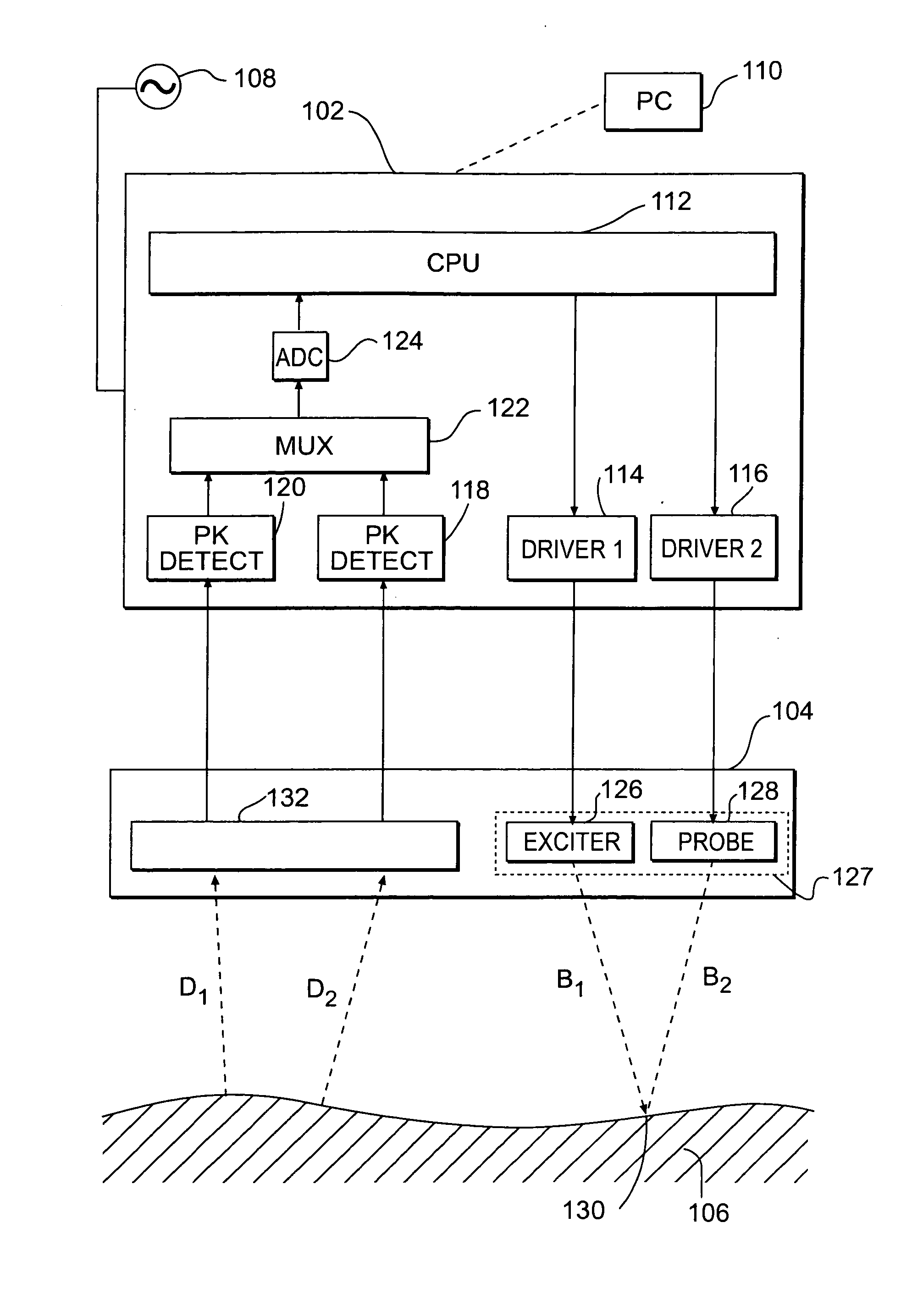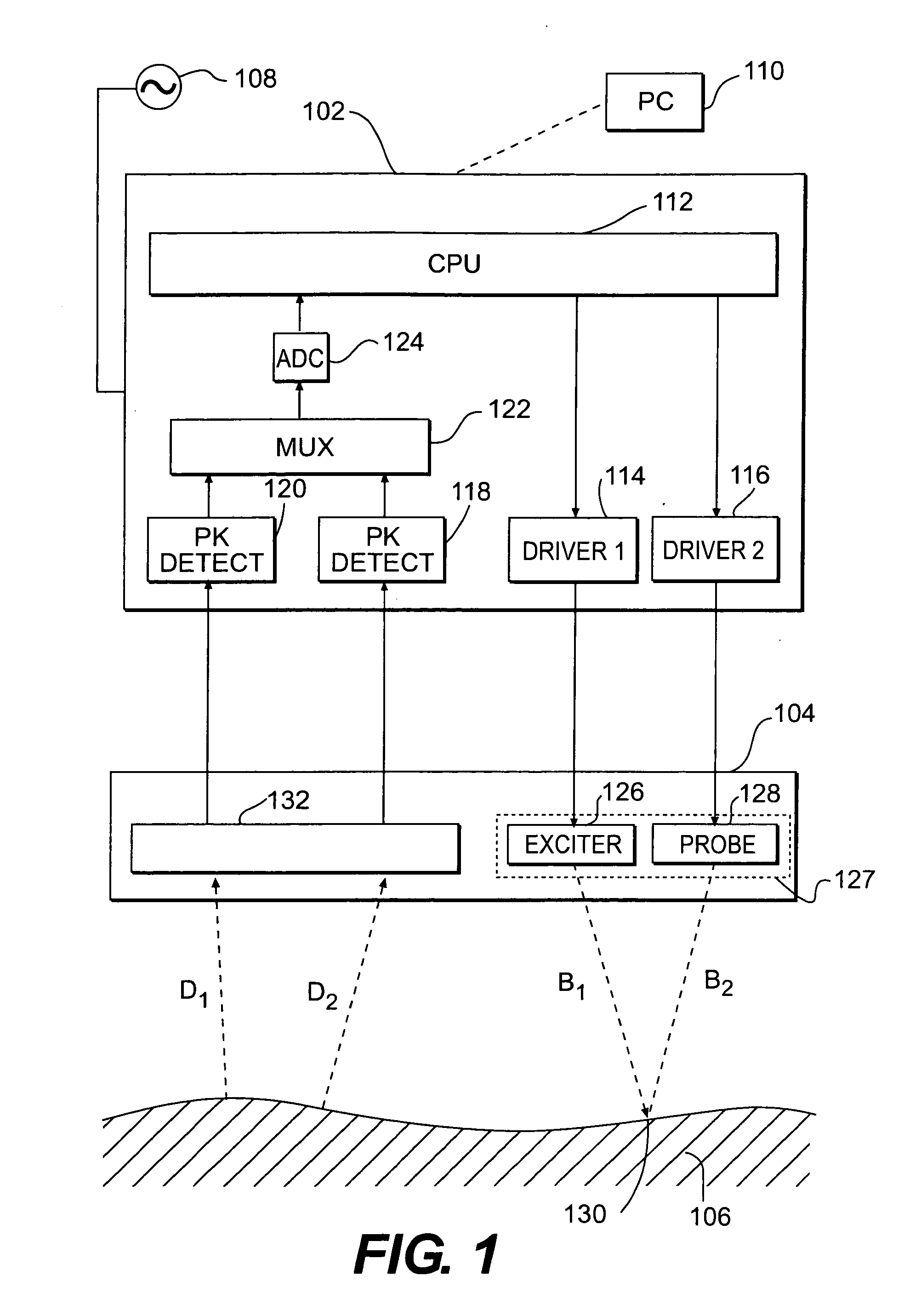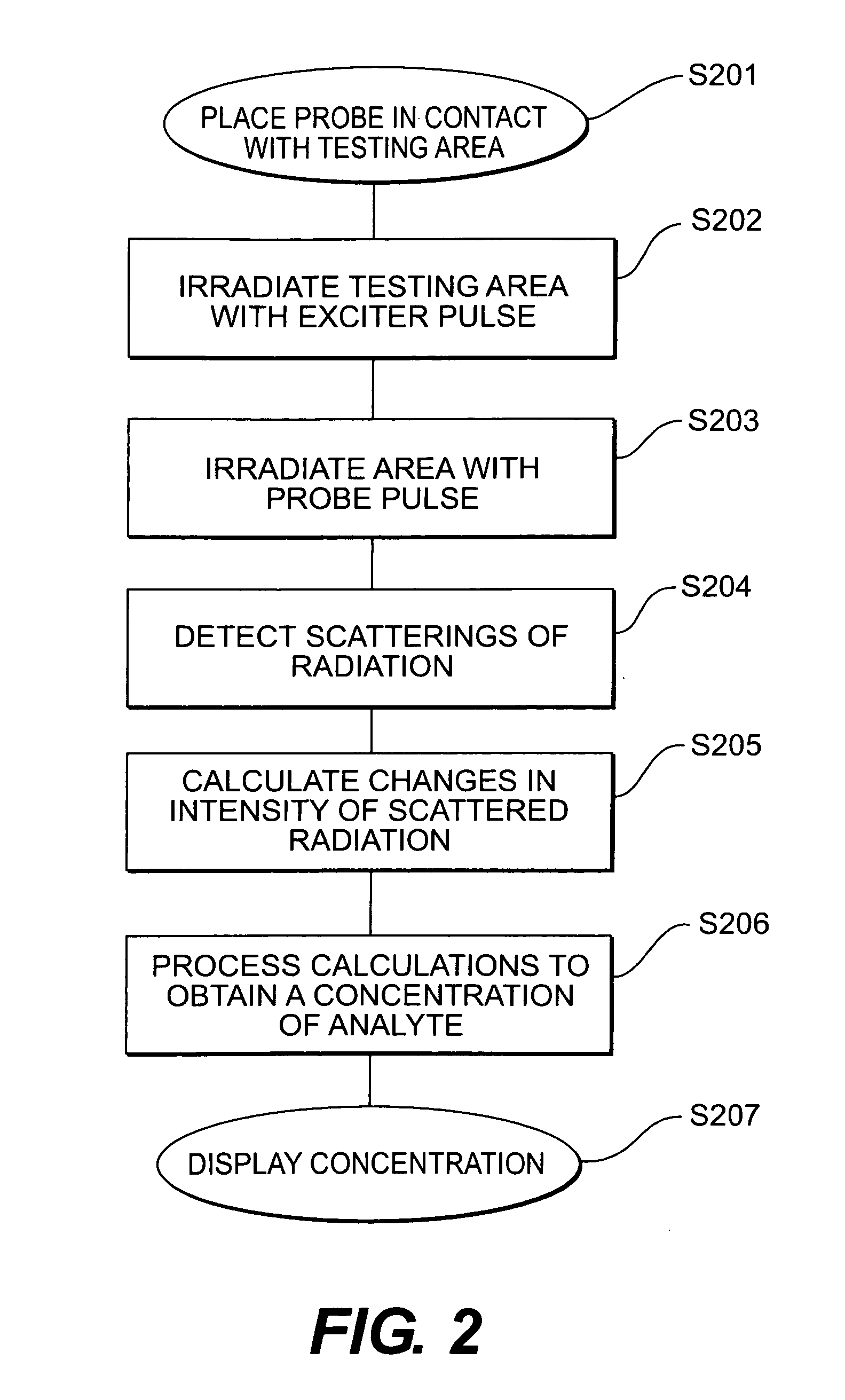Optical sensor for determining the concentration of an analyte
a technology of optical sensors and analyte concentration, applied in the field of optical material analysis, can solve the problems of inconvenient fingertip puncture to obtain blood sample, inability to monitor glucose level, and risk of fingertip infection
- Summary
- Abstract
- Description
- Claims
- Application Information
AI Technical Summary
Benefits of technology
Problems solved by technology
Method used
Image
Examples
example 1
[0056]In an embodiment consistent with the present invention, the optical apparatus as described above with respect to FIG. 1, for example, is used to determine the concentration of glucose in a human subject, such that surface 106 of FIG. 1 is human tissue. FIG. 4 is a graph illustrating the intensity and duration of the different types of radiation emitted by an optical apparatus consistent with this embodiment. For this embodiment, first and second radiation sources 126 and 128 are selected to correspond to a glucose absorption band having a peak around 1590 nm. In this embodiment the optical apparatus is provided such that first radiation source 126 is a laser emitting an exciter beam B1 at a wavelength of 1550 nm, power of 1.0-10.0 W, and a pulse width of 100 ns. Second radiation source 128 is a laser provided to emit a plurality of periodic probe pulses B2 at a wavelength of 1550 nm, a power of 0.1-1.0 W, and a pulse width of 80 ns.
[0057]In operation, exciter beam B1, in accor...
example 2
[0059]In another embodiment consistent with the present invention, the optical apparatus as described above with respect to FIG. 3, for example, is used to determine the concentration of glucose in a human subject, such that surface 106 of FIG. 3 is human tissue. FIG. 5 is a graph illustrating the intensity and duration of the different types of radiation emitted by an optical apparatus consistent with this embodiment. For this embodiment, first and second radiation sources 126 and 128 are selected to correspond to a glucose absorption band having a peak around 1590 nm. In this embodiment the optical apparatus is provided such that first radiation source 126 is a laser emitting an exciter beam B1 at a wavelength of 1550 nm, power of 5 W, and a pulse width of 100 ns. Second radiation source 128 is a laser provided to emit a plurality of periodic probe pulses B2 at a wavelength of about 1610-1690 nm, a power of 0.25-0.5 W, and a pulse width of 80 ns.
[0060]Consistent with the present i...
PUM
 Login to View More
Login to View More Abstract
Description
Claims
Application Information
 Login to View More
Login to View More - R&D
- Intellectual Property
- Life Sciences
- Materials
- Tech Scout
- Unparalleled Data Quality
- Higher Quality Content
- 60% Fewer Hallucinations
Browse by: Latest US Patents, China's latest patents, Technical Efficacy Thesaurus, Application Domain, Technology Topic, Popular Technical Reports.
© 2025 PatSnap. All rights reserved.Legal|Privacy policy|Modern Slavery Act Transparency Statement|Sitemap|About US| Contact US: help@patsnap.com



